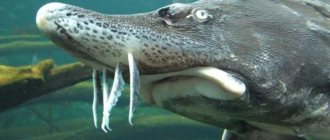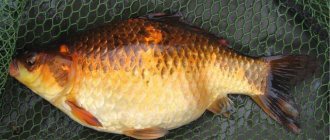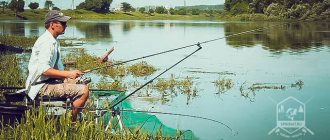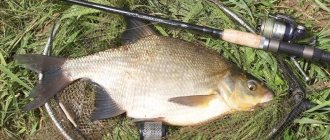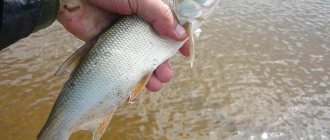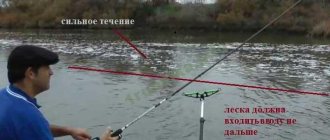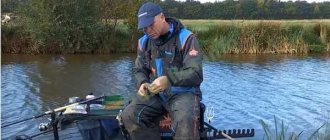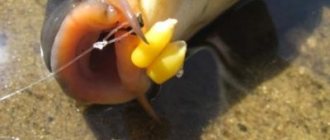It is very difficult to answer such a question, especially in our time, when in order to catch it, humanity has come up with a lot of gear that leaves little chance for the fish to extend its long life. Not only that, but in the underwater kingdom she will find many predators and other troubles that affect her life expectancy. If we add to all of the above the environmental component (emissions of chemicals into water bodies), then it is simply amazing how fish are still alive in our water bodies and continue to delight all fishermen, although not with large catches. When they say that a fish lives until it is caught, this is absolutely not relevant in relation to our time.
In order to prolong its life, the fish goes through many obstacles and withstands extreme conditions: heat, cold, lack of food, various predators.
Amazing capabilities of crucian carp
Unlike other fish species, crucian carp can withstand most of these conditions and even more. It can fall into a state of suspended animation when there is a lack of oxygen in the water, buries itself in the silt and remains there in this state for quite a long time: the time can be calculated not in days or months, but in years.
A female crucian carp can lay from 50,000 to 300,000 eggs, most of which may not produce offspring due to unsuitable conditions, and some may simply be eaten by other fish species.
Under certain conditions, the surviving part of the eggs will give rise to fish offspring in the form of small crucian carp, which are practically not protected by anything in the first days of life. They appear 2-3 weeks after the eggs have been laid and fertilized. During this period, quite a lot of crucian carp fry die. The first year or two is very difficult for him, after which it is easier for him to survive until puberty, which occurs in the 3rd or 4th year of life. In two years, if there is enough food, he can gain weight from 200g to 300g and may no longer be afraid of most of his hunters. But this is exactly the weight that fishermen love very much and are not averse to having such crucian carp as a trophy.
Taste qualities of crucian fish
The meat of crucian carp is white and very tasty. It is considered a dietary product because it contains protein, which is easily digestible, as well as many useful vitamins - A, D, E, saturated fatty acids and mineral elements. Crucian carp meat is rich in calcium and phosphorus; it contains magnesium, chromium, iron, fluorine, molybdenum, sodium and nickel.
A delicious aspic is prepared from crucian carp. But the most luxurious dish, especially for fish gourmets, is crucian carp cooked in sour cream. Fish can be fried and baked. Ukha cooked over a fire from freshly caught crucian carp is a real delicacy.
Types of crucian carp
As far as we know, two types of crucian carp can be found in our reservoirs: golden and silver . Golden crucian carp prefers reservoirs with stagnant water, and silver crucian carp can live anywhere: in rivers, lakes, ponds, stakes, etc. Even small, artificial “diggings” somehow become populated with white crucian carp over time.
Red crucian carp can live, if it is not caught during this time, up to 10, 12 years , gaining a weight of 5 kg during this time and reaching a length of about half a meter. As a rule, inveterate “crucian carp fishermen” know the habits of this fish well, since they give preference to catching golden crucian carp, which is considered tastier than its silver counterpart. To catch such a handsome fish, appropriate baits and attractants have been developed. In this case, the habits of the red crucian carp are used, which moves around the reservoir using its “paths”. Every fisherman has a great desire to catch red crucian carp, which, weighing about half a kilogram, resists very seriously. They also say that he is much smarter than the white one, therefore, he very rarely falls for the bait.
Silver crucian carp lives no more than 10 years , reaching a weight of about 1-1.5 kg. Being in the same reservoir with red crucian carp, it gradually displaces it and takes a dominant place. Most likely, this is due to the fact that silver crucian carp is more tenacious and prolific, while eating its golden brother. At the same time, it is able to live in very muddy water. Sometimes you just wonder how white crucian carp can live in such a reservoir, with such muddy (sometimes green) water, and in large quantities at that.
As a comparison, we can say that the beluga can live up to 100 years. Fish such as carp, catfish, and sturgeon can live up to 50 years, and smaller fish can boast a life expectancy of about 10-15 years.
From the above we can conclude: the larger the fish, the longer its life.
Distribution and habitats
The maximum size of silver crucian carp can be about half a meter and weigh about 3 kg. However, ichthyologists know of reliable cases of catching specimens whose mass exceeded 4 kg.
The largest crucian carp in the world: photo description
The golden type has a more modest size. It can grow up to 35 m in length and have a maximum weight of no more than 2 kg. Such specimens are extremely rare. Fishermen's catches usually contain individuals whose weight is no more than 500 g. A kilogram specimen is already considered an enviable trophy.
How quickly crucian carp grows directly depends on the type of reservoir in which it lives, as well as on the quality and quantity of food available to it. In small ponds, its growth rate is significantly slower than that observed in fish growing over a vast area of water. In small bodies of water, in the complete absence of a predator and a lack of nutrition, it often takes on a dwarf form and does not exceed 10 cm in length.
We suggest you read: How to make a fishing rod for crucian carp
If there is a rich food supply, at the age of 2 years, crucian carp can weigh about 150 g. Under the same conditions, by the age of four, it grows to 400 g. Fish weighing about a kilogram are usually in the age range from 7 to 10 years.
On a note! The main part of the diet of crucian carp is plant food, therefore in artificial sand quarries, where there is an acute shortage of algae, its growth rate slows down significantly.
If the reservoir is rich in a variety of aquatic plants, the fish quickly gains weight. However, upon reaching sexual maturity, crucian carp should be able to eat not only plant, but also animal food:
- aquatic insects;
- worms;
- small shellfish;
- bloodworm.
This hybrid diet allows him not to slow down his growth rate as he gets older and reach his maximum size by the end of his life.
How to make a pond for growing crucian carp
For growing crucian carp a small fire pond , an artificial dam on a stream, or a decorative pond can be used. If there are none, then it is quite possible to make such a reservoir on your own.
The area of the dug pond must be at least 25 square meters. m., and the depth is about 2 m. There is no point in making a deeper reservoir, since this will cause long-term warming of the water to an acceptable temperature, but at a shallower depth there may be problems with wintering fish.
The process for creating a backyard pond is as follows:
- The shape of the reservoir is marked using a peg and a cord. It doesn't have to be rectangular.
- A pit is dug using an excavator or manually . The slope of the walls to the middle of the reservoir should be about 20 degrees .
- The bottom is and paved with crushed stone and sand.
- Waterproofing made of roofing material or film is laid at the bottom of the reservoir with its obligatory release to the surface of the earth.
- The bottom is concreted with a first layer of concrete of about 10 cm, at the same time reinforcing mesh is sunk into it and laid along the entire bottom.
- After the first layer has hardened, the remaining area of the reservoir is concreted using formwork. The use of reinforcing mesh is mandatory.
- The walls are plastered using water-resistant additives - for example, liquid glass.
- Once it has hardened, gravel, sand or loam is poured onto the bottom of the reservoir for planting algae , and if desired, decorative boulders are laid.
- The pond is filled with water some time before it is stocked - for the fry to grow successfully, the required microflora and fauna need to develop in the water.
Attention! For successful wintering of crucian carp, you can make a small depression at the bottom up to 80 cm below the main bottom level - the so-called wintering well.
The fish will accumulate there for the winter.
Stocking the created pond with crucian carp
For stocking, young crucian carp can be taken from fisheries. For a pond with a total area of about 25 square meters. m. you need about 20 fingerlings, which can be raised to commercial sizes.
Before releasing fingerlings, it is necessary for the water in the pond to settle and the necessary microflora and fauna to develop there , which will provide additional food for crucian carp.
This method is convenient because in this way it is easy to regulate the number of fish , avoiding overpopulation, and at the end of the season the crucian carp is caught having reached the required size.
You can also stock the pond yourself . To do this, for the specified reservoir area of 25 square meters. m will need 2 female goldfish and a couple of male goldfish. You can also use a male carp, since males are extremely rare in the goldfish population, and fertilization of eggs by other fish species is necessary for their development.
The size of crucian carp should be at least 200-300 g, despite the fact that the sexual maturity of silver crucian carp occurs already in the second year of life with a smaller weight. Males should be selected with flowing milk. It is best to take fish with a tall body , as they gain weight faster.
Attention! Before the fish are released into the pond, they must be kept separately.
Distribution and habitats
Due to its unpretentiousness and high fertility, crucian carp has become very widespread. If initially it was found only in the Amur River basin and its tributaries, today it is found on all continents. The rapid settlement of this representative of the carp family was largely facilitated by the man who stocked the reservoirs located near his home with crucian carp. From small stocked ponds, thanks to waterfowl, fish quickly migrated to nearby rivers, lakes and reservoirs.
Now crucian carp is actively inhabiting standing and flowing reservoirs of India and America, where it is already beginning to be caught on the gear of amateur fishermen. It should be noted that the silver species is characterized by increased vitality and is quickly displacing the golden variety from its usual range. The reason for this is several factors:
- fast growth rates;
- ability for gynogenesis;
- high fertility.
Ichthyologists seriously fear that in 2–3 decades the golden species may completely cease to exist in the wild.
Interesting! Crucian carp can exist in any type of reservoir. The only exceptions are shallow mountain rivers with cold water.
In ponds, it spreads evenly throughout the water area, but prefers to stay close to thickets of underwater vegetation. In large lakes and reservoirs it adheres to a well-warmed coastal zone, where the largest concentration of its potential food items is observed. In rivers with moderate currents, it lives in overgrown creeks and bays, but the largest individuals can feed next to the main stream, which carries more high-calorie food.

We suggest you familiarize yourself with: Fishing for crucian carp in autumn
Crucian carp is not at all picky about the amount of oxygen dissolved in water and feels great in those ponds and lakes where other fish cannot survive. This ability often makes him the only inhabitant of the reservoir. Only rotan can compete with crucian carp in terms of survivability, so these species often coexist.
Feeding
Feeding crucian carp in a home pond is not particularly problematic , since its natural diet is very varied. Over time, bloodworms and other living creatures and algae will multiply in the pond, however, for good fish growth, it requires feeding both in reservoirs with established water and in recently filled ones.
What to feed crucian carp in a home pond
Since crucian carp is omnivorous, plant foods can be used to feed it - for example, rye, bran, corn, boiled potatoes, and animal food - minced meat, bloodworms, earthworms or dung worms. For a fully balanced diet, you can also use ready-made industrially produced food . They will have an optimal ratio of nutrients and microelements - fats, fiber, proteins, vitamins. Feeding rules. The time for additional feeding of crucian carp comes when the water temperature is from 10 degrees - that is, starting from the month of April. You should not add bait earlier, because the fish will be inactive and show no interest in food. There is also an upper temperature limit, which is 25 degrees. At higher water temperatures, crucian carp also stop feeding.
Feeding process
To feed crucian carp, you should use a special device - a metal tray , preferably made from a sheet of stainless or galvanized steel. It would be good if it had a mechanism that allows it to be freely immersed and lowered into water.
This is done so that you can regulate the process of eating food, visually monitoring the presence of bait residues at the bottom, and also in order to remove uneaten food from the water, preventing it from rotting and spoiling the water in the pond. How often and in what quantities to feed.
Add a comment Cancel reply
You must be logged in to post a comment.
It is difficult to find a person who is not familiar with the most common inhabitant of our water bodies, the ubiquitous crucian carp. This fish is found everywhere, with the exception of the coldest regions and fast-moving mountain rivers, is undemanding to water quality and unpretentious to the food supply. The lifespan of crucian carp, unlike other characteristics, is not champion, but given the intensity of its reproduction, this can hardly be considered a disadvantage.
Today we will take a close look at all stages of crucian carp development, from eggs to adults. Agree, this fish deserves the closest attention, if only because of its wide distribution and record adaptability. By the way, its lifespan cannot be compared with its vitality - as you know, this fish continues to resist the inevitable, even after being gutted and laid on a sizzling frying pan!
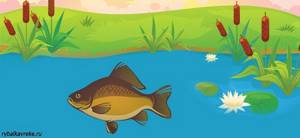
Silver and gold carp
Professionals are ready to share their knowledge in the field of breeding silver and gold crucian carp. It has been proven that the silver species reproduces faster. It is more unpretentious and is able to survive even in the harshest conditions. The weight of an adult reaches 1.5 kg, and under favorable conditions even more.
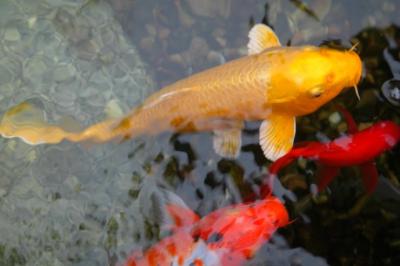
Golden or red crucian carp is somewhat less common, although it is also considered an unpretentious and easy-to-breed fish. A distinctive feature of this species is its preference for stagnant water for life. However, this species is more difficult to catch, although fans say it is worth it. The taste of goldfish is much more interesting and refined than its silver counterpart. This species strongly resists when caught, but this does not diminish the excitement of fishermen, because the weight of an adult fish can reach 5 kg.
So, how long the crucian fish lives is now clear. Which species to choose for breeding is a matter of personal preference. For fishing lovers, such a fish will be an excellent gift.
Sources:
https://rybobzor.ru/raznovidnosti-ryb/karas/177-skolko-zhivet-karas.html https://fishingday.org/skolko-zhivet-karas/ https://fb.ru/article/396097/gde -kak-i-skolko-jivet-karas
The first year of life of crucian carp
The breeding season of this fish in mid-latitudes occurs in May-June, but even in August you can sometimes catch females full of caviar. A female crucian carp at the peak of reproductive age is capable of laying about 300-400 thousand eggs in two or three batches. The eggs attach to algae and other underwater objects. The juveniles remain in the egg stage for about 3-5 days (again a record speed!), but under unfavorable conditions this period can last for a week or more.
The diameter of just the laid egg is about half a millimeter, but immediately after fertilization it begins to grow rapidly, increasing by one and a half to two times per day. The 3-5 mm long larvae emerging from the eggs immediately attach themselves to the vegetation and continue to feed on the remains of the yolk. On about 2-3 days they detach, gain mobility and switch to external food sources, mainly phytoplankton.
